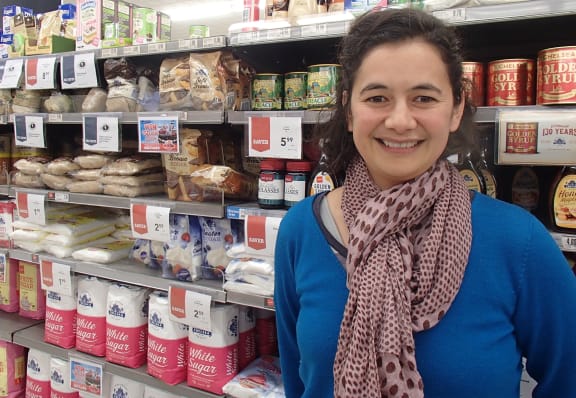Sugar has been labelled ‘white death’, and while it might seem over-dramatic there are growing amounts of research that suggest this nickname is well earned.
University of Otago researcher Lisa Te Morenga is one of a growing number of nutrition scientists world-wide calling for restrictions on the sale of sugary drinks, for example, as a public health measure to try and curb growing rates of obesity, diabetes and other noncommunicable diseases such as cardiovascular problems.
‘In some recent research published with my colleague Jim Mann we’ve shown that even if consuming too much sugar doesn’t cause you to gain weight, it does seem to be increasing some of our risk factors for cardiovascular disease,” says Lisa “So we were able to show that people consuming diets higher in sugar tended to have higher triglyceride concentration, higher total cholesterol and LDL cholesterol, which is the bad cholesterol associated with increased risk of heart disease, and slightly higher blood pressure.”

Lisa Te Morenga next to shelves of sugar in a supermarket Photo: RNZ / Alison Ballance
In draft guidelines published earlier this year the WHO or World Health Organisation, is considering advising people to consume less than 5% of their total daily calories from sugars; this is about 25 grams of sugar (about 6 teaspoons) a day. By comparison an average can of soft drink contains about 40 grams.
In its proposal the WHO says that their proposed healthy sugar level includes all sugars added to processed foods as well as naturally occurring sugars in, for example honey and fruit, and they point out that ‘hidden’ sugar can be found in a wide range of foods. One tablespoon of ketchup, for example, contains around 4 grams or a teaspoon of sugar.
Among the evidence gathered for this change in the WHO’s recommendation, which halves the amount of sugar they used to suggest as a daily intake, was a meta-analysis produced by Lisa and her colleague Jim Mann, also in the Edgar National Centre for Diabetes and Obesity Research. This analysis was titled ‘Dietary sugars and body weight: systematic review and meta-analyses of randomised controlled trials and cohort studies’, and was published in the British Medical Journal in 2013.
Alison Ballance joined Lisa in a Dunedin supermarket to look at how much sugar was present in foods such as muesli bars and fruit wraps, and drinks such as soft drinks and fruit juice. They found that a single glass of a well-known fizzy drink contained a day’s recommended sugar intake, and delivered only what Lisa called ‘empty calories’ and no nutritional benefit.
Lisa advocates an ‘all things in moderation’ approach to eating and suggests that sugar-rich foods such as fruit juice are a ‘sometimes’ food not an everyday food.
“If you were to have a glass of fruit juice that’s probably the equivalent in calories to eating six apples. And it would be pretty hard for your kid to eat six apples,” says Lisa. “But if [your kid] did eat six apples they’d also be eating a whole pile of dietary fibre and they’d be getting a whole lot of the phytochemicals and things that come with the skins that we think have some interesting health properties. But when you’re having juice really all you’re having is the sugar.”
Lisa and PhD student Devonia Kruimer are investigating urinary biomarkers that they hope will help them to accurately link dietary intake of sugars with health outcomes. At the moment such studies rely on study participants keeping food diaries, and these are known to be unreliable.
Recent research by the Health Promotion and Policy Research Unit at the University of Otago found that school children associated sugary drinks with sports, as they mistakenly thought they were energy drinks, and researchers called for more action to help parents and chuldren make healthier drink and food choices.

